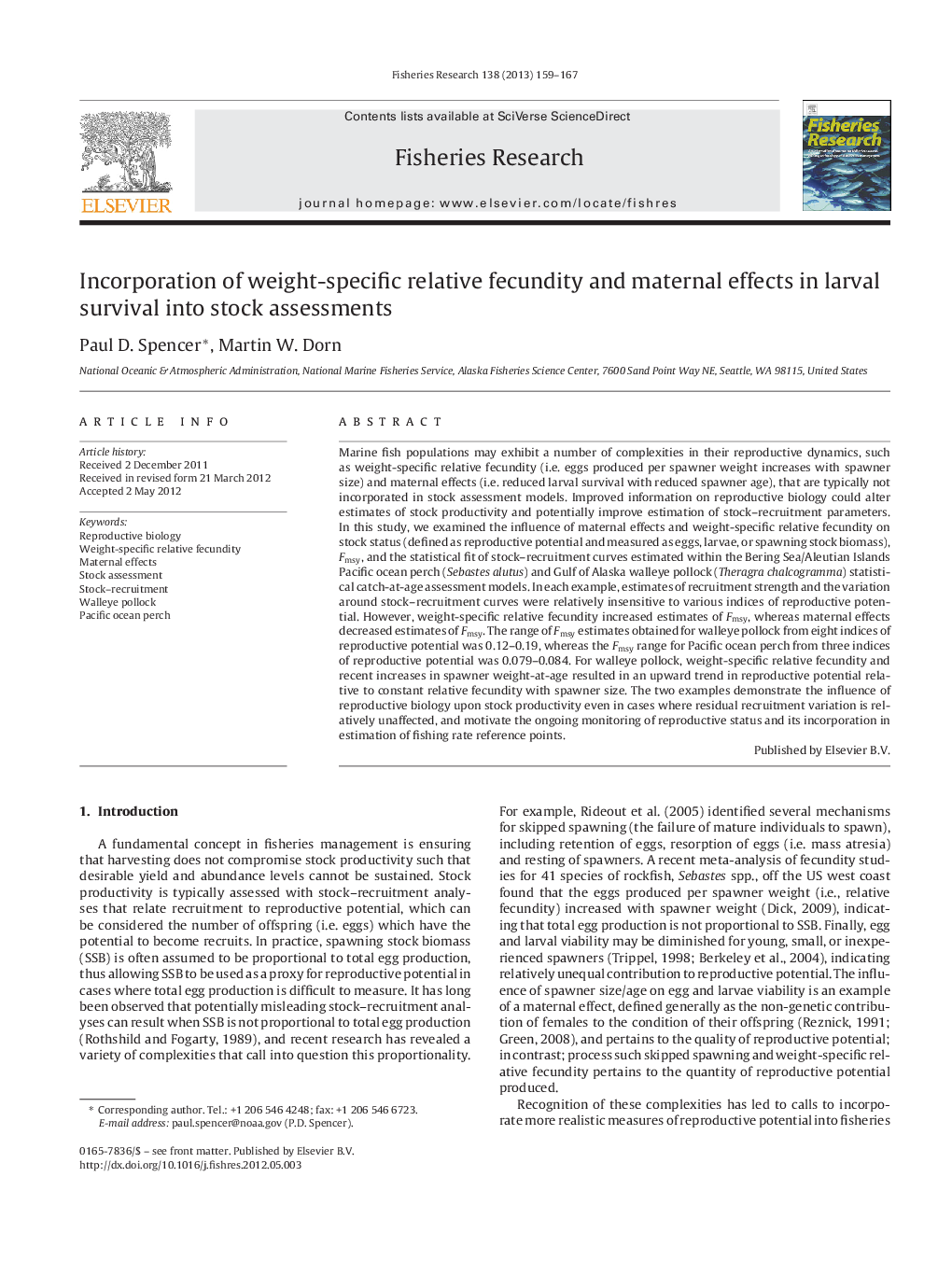| کد مقاله | کد نشریه | سال انتشار | مقاله انگلیسی | نسخه تمام متن |
|---|---|---|---|---|
| 4543230 | 1626830 | 2013 | 9 صفحه PDF | دانلود رایگان |

Marine fish populations may exhibit a number of complexities in their reproductive dynamics, such as weight-specific relative fecundity (i.e. eggs produced per spawner weight increases with spawner size) and maternal effects (i.e. reduced larval survival with reduced spawner age), that are typically not incorporated in stock assessment models. Improved information on reproductive biology could alter estimates of stock productivity and potentially improve estimation of stock–recruitment parameters. In this study, we examined the influence of maternal effects and weight-specific relative fecundity on stock status (defined as reproductive potential and measured as eggs, larvae, or spawning stock biomass), Fmsy, and the statistical fit of stock–recruitment curves estimated within the Bering Sea/Aleutian Islands Pacific ocean perch (Sebastes alutus) and Gulf of Alaska walleye pollock (Theragra chalcogramma) statistical catch-at-age assessment models. In each example, estimates of recruitment strength and the variation around stock–recruitment curves were relatively insensitive to various indices of reproductive potential. However, weight-specific relative fecundity increased estimates of Fmsy, whereas maternal effects decreased estimates of Fmsy. The range of Fmsy estimates obtained for walleye pollock from eight indices of reproductive potential was 0.12–0.19, whereas the Fmsy range for Pacific ocean perch from three indices of reproductive potential was 0.079–0.084. For walleye pollock, weight-specific relative fecundity and recent increases in spawner weight-at-age resulted in an upward trend in reproductive potential relative to constant relative fecundity with spawner size. The two examples demonstrate the influence of reproductive biology upon stock productivity even in cases where residual recruitment variation is relatively unaffected, and motivate the ongoing monitoring of reproductive status and its incorporation in estimation of fishing rate reference points.
Journal: Fisheries Research - Volume 138, February 2013, Pages 159–167